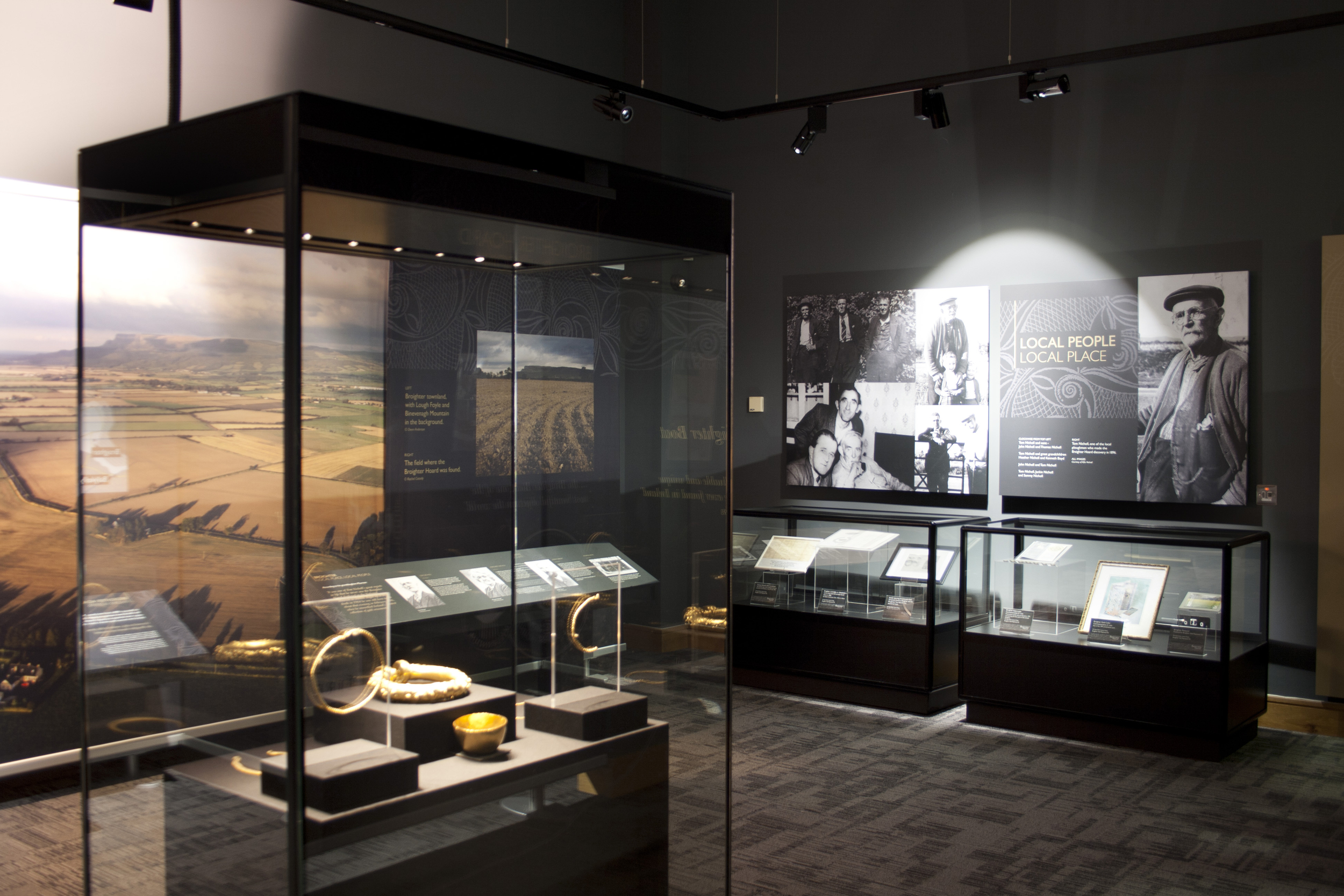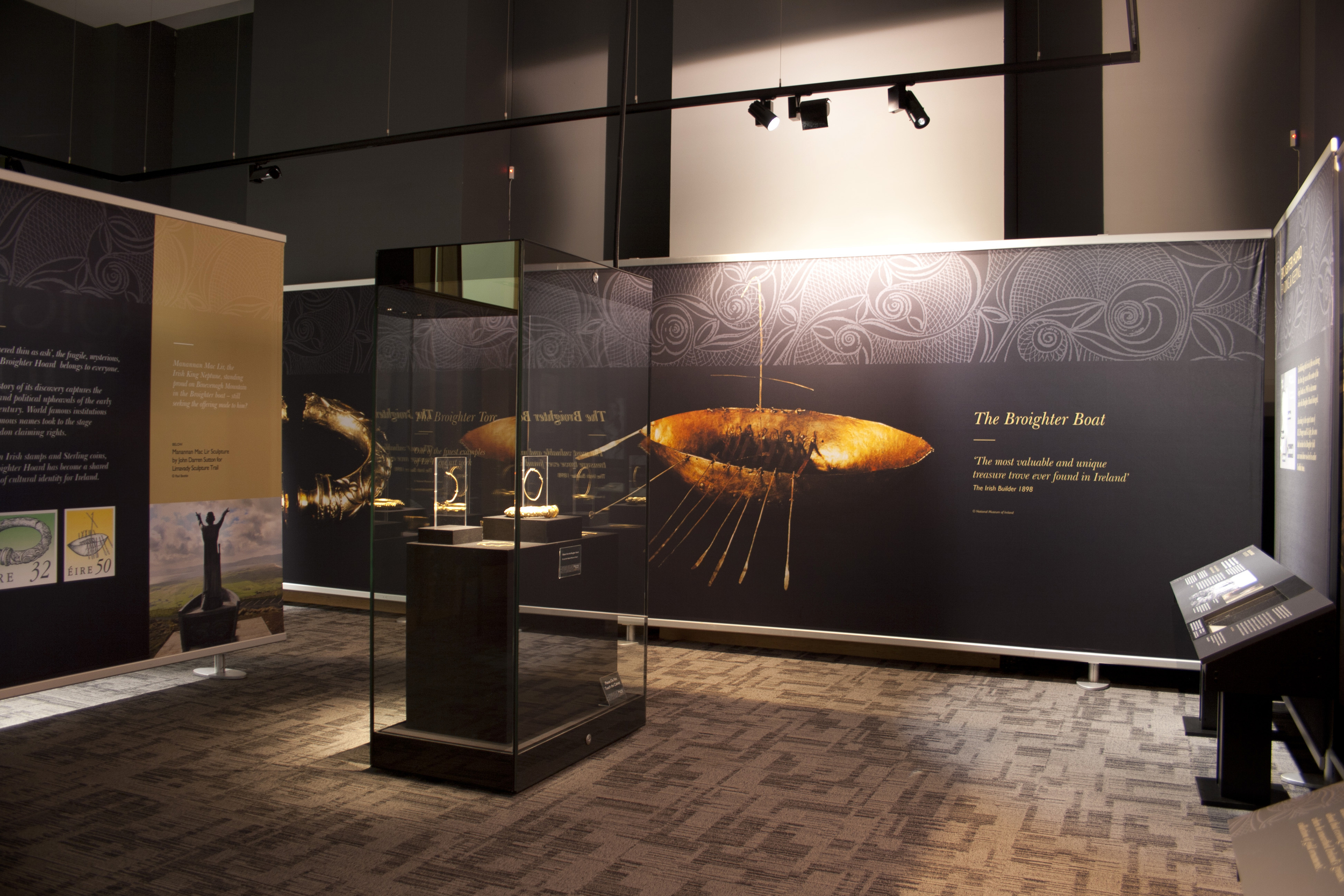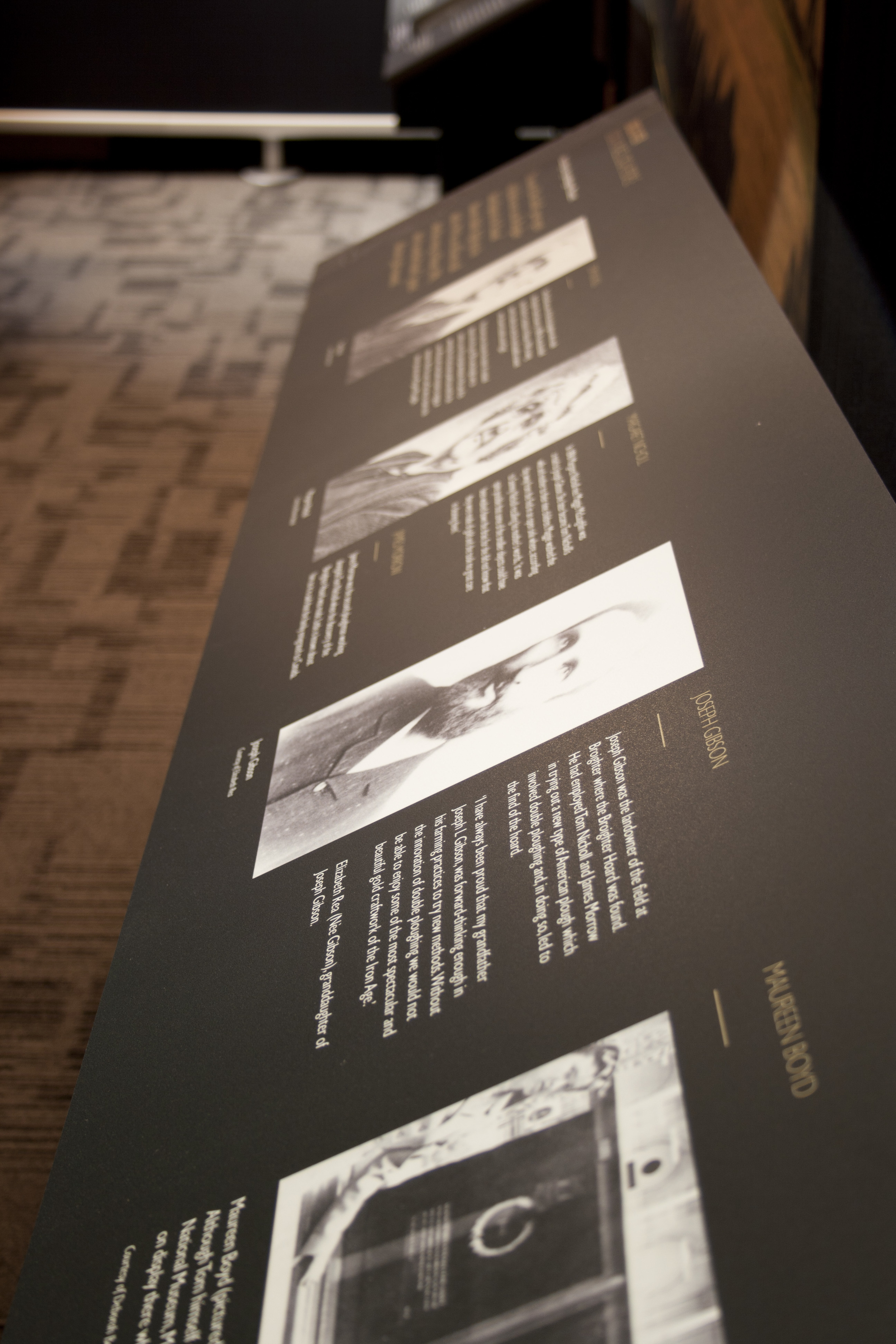Broighter Hoard
““The Broighter Hoard has now become a shared symbol of cultural identity for Ireland…””
In February 1896 local men James Morrow and Tom Nicholls, working on Joseph Gibson's farm, were double ploughing behind the horses and struck a hard object. Covered in clay before being washed at the farm, the Broighter treasure was revealed as one of Ireland's greatest hoards of gold.
Gibson sold the hoard to a Derry jeweller for £200. It was then bought by Robert Day, a Cork collector, who sold it to the British Museum for £600. The Royal Irish Academy declared the Broighter finds a treasure trove, however, and demanded that it be returned.
In 1903 a case to decide ownership was brought to the Royal Courts
of Justice in London. The case centred on whether the hoard was
had been deliberately concealed or simply lost. Eventually the hoard
was declared to have been concealed on pirpose, and so as treasure trove it became the property of the Crown.
The history of its discovery captures the social and political upheavals
of the early 20th century. World famous institutions and famous names took to the stage in London claiming rights. The Broighter Hoard has now become a shared symbol of cultural identity for Ireland.
Tandem were responsible for developing a temporary exhibition for
the exhibition of the Broighter Hoard. The item was on loan from the National Museum in Dublin to Limavady Borough Council, and on
display to the public at the Roe Valley Arts & Cultural Centre.
As the exhibition was temporary and was to have no lasting effect to the venue, we chose to work with a fabric tension system. This allowed us to maintain high quality graphic display, without having to attach anything to the interior infrastructure of the building.
In addition to the fabric system, we designed and produced a number
of lectern panels within which we designed cut out sections, covered
by Perspex, allowing for the display of items. This provided additional display space for the client without the need for full display cabinets.
Our designers worked with the client directly to develop a scheme suitable for the nature of the exhibition.







